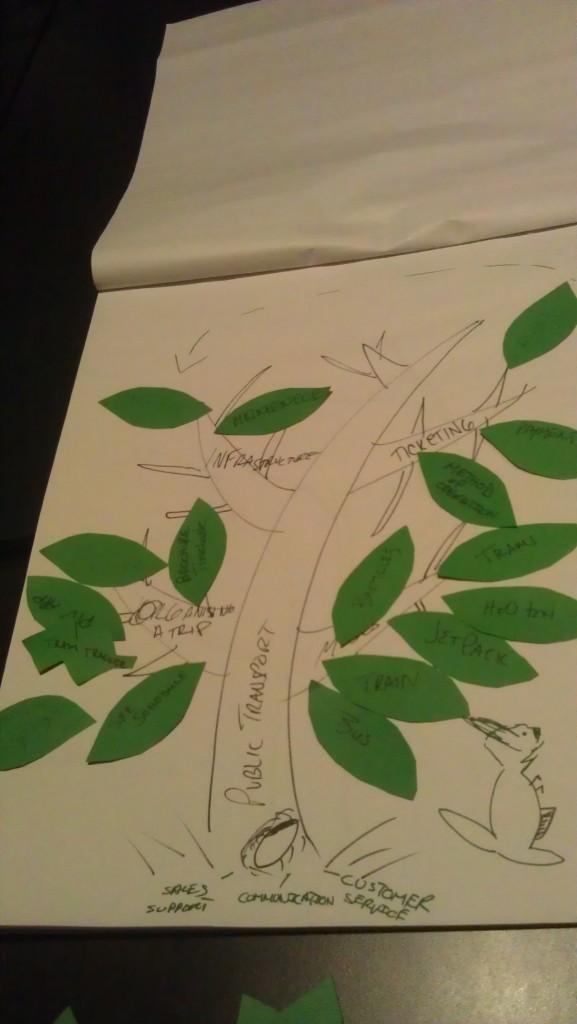At our September meet-up we had a big round table discussion about Managing the Customer. The topic was proposed because we Product Managers talk about them all the time, but I was reminded by a question put to me by a friend in a start-up about the changing stages of customer engagement. Whether you’re in a pilot phase of a product, a start-up, a cash cow or legacy product, what are some of the things that hold true across each of these stages of interaction? What differs? And either way, how well are we all doing at that?? So I put forth some pre-prepared questions to guide the discussion but there was a very pleasant set of side tracks that came up as well. The wealth of knowledge sharing will be hard to capture here in a simple blog post so I will perhaps share some of the tips instead, but it was a cracking good night.
Do you find Managing your Customer easy or hard? What are your tips? What are you obstacles? What changes with the scale/number of customers?
Under this area we talked about tools that could help with customer management. All of us enjoy it but the crux of this area is scale. The first few customers, the first voices are something you can handle but how do you cope as you scale up, how do you cope with the multitude of ideas and keep the dialogue going? Some suggested tools for collating and collecting customer feedback were
User Voice,
Get Satisfaction (although apparently a problem with scale here),
Zendesk,
Desk (from Salesforce) and
Yammer (allows for private community options). The scale comment did lead to the insight that cultivating your customers is a full time role and a Community Manager is a way to both co-ordinate these tools and keep up the contact with your customers.
One important note when using these communities and tools is to make sure you close out anything you aren’t actually going to solve or fix. This cycle is important in all communications but especially in a place where your customers can stumble across an issue/topic they didn’t even know about and think it may still get fixed. I guess the key theme here is all about managing expectations! The critical strategy is to repeat, remind and reiterate your product vision so that the customer understands why an idea or concept might not be picked up. However, if the customer brings something to the table you hadn’t expected be open to the opportunity!
A key warning mentioned by all was ways to ensure the overly vocal, super user, is not the only user you listen to. They will be able to provide some great insights but may drown out the quieter voices of the majority. So in efforts to hear those voices think about how you create groups of customers for forums, in user groups or via the social media options that are available.
How does the feedback fit into your product dev/release cycle?
So the next part of the discussion leads into the area of taking all of the valuable input from the above and figuring out how to fit it in. A question put to the group was whether they had used any Weighting tools to decide what to do first. The gist of the answers was a resounding No. This is the area where a product owner is so important, also known as a “great person”! The key recommendation here: at the top have someone good to pick the important features; bugger the list.
However, wait for it! A list is really useful for bugs. Here are some ideas of how to deal with bugs (because those can s**t the customer):
- Fix it Fridays – to focus on bugs.
- Another way to motivate action in this area is to talk about time impact i.e answering this bug costs me “four” hours a week so fix that.
- Another option are Community camps – all your developers have to get together to answer email or address problems once a month or quarter
Some tools for capturing said bugs are Bugherd – for the customer or Jira – for logging them internally. And one important call out that I have heard before to get some testing done is the easy to coordinate service provided by User testing
What have you seen others do well that you would like to do as well?
This was a fun chat on the good things we have seen done either as as a customer, user, or in our business!!:
- live chat tools on websites
- AppSumo – a nice experience; during the unsubscribe from their mailing list process they offered a once week option instead of the daily updates, so (I) stayed onboard.
- Buffer – tweetdeck, zappos personalized and great customer support
- Whirlrite – inspire pride in users, salesforce do this well (Editor note: not sure I have this brand name right)
- Wunderkinder – some great stuff going on with pride in the brand (Editor note: not sure I have this brand name right)
- iiNet – good service
- Styletread – the proper online shopping experience. C’mon Aus, catch up!!
- Asos – good website, bookmark it and save it
How do you give updates back to your customers? At the time? Via release notes? Other?
So, after all that how do we get back to the customer after all that interaction – real time is important and we haven’t tried to cover the social media aspect that could support that – but some old school options are:
- Blogging: keep the communication open and easily accessible
- Social: as I said we touched on this but the depths of this topic are probably worthy of their own session. Let us know by posting a comment if that would appeal.
- Reply to the email – get back to people no matter how long ago it was! So if you attach each complaint to the bug report, then one by one, you can let every customer know the fix is now done.
How do you move a customer from VIP status to “just like everyone else”?
Say you worked on a start up and had user groups involved in the building of the product who you gave discounts on the (future) product. How to get away from this situation?
This question suggested that a VIP status cannot be maintained, but our discussion traversed a number of scenarios that show you don’t need to move anyone out of this status, because it can be maintained AND used to your products advantage.
For example some companies use this VIP status to pool their customers together to deliberately prioritise requests and ideas. Some companies doing this are:
- Hit wise – they run a customer council, once a year, and ask their top 20 customers to be involved (part of the VIP management!)
- Google Melbourne – calling for their super users (Well known users vs super users)
So all in all a massive session was had and such a great night of sharing experiences, knowledge and insight. Any of these questions could lead to their own dedicated session – let us know if you have more to contribute. We had lots in common which was fabulous to see, yet so much more to learn from each other which was at the heart of what Product Anonymous is here for!
Product Anonymous won’t meet in October as
Product Camp is being held on Oct 20th. We hope to see you there! The next product anonymous event will be Nov 22nd.




